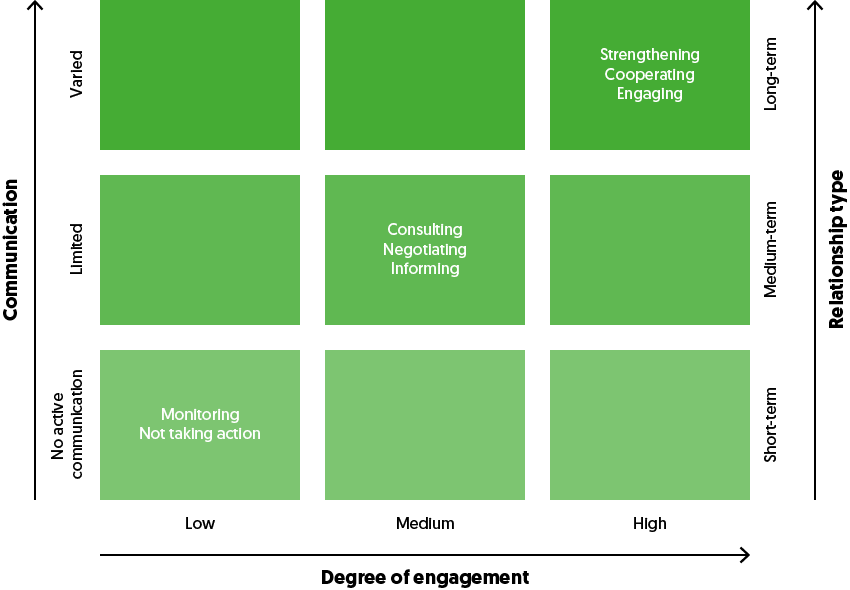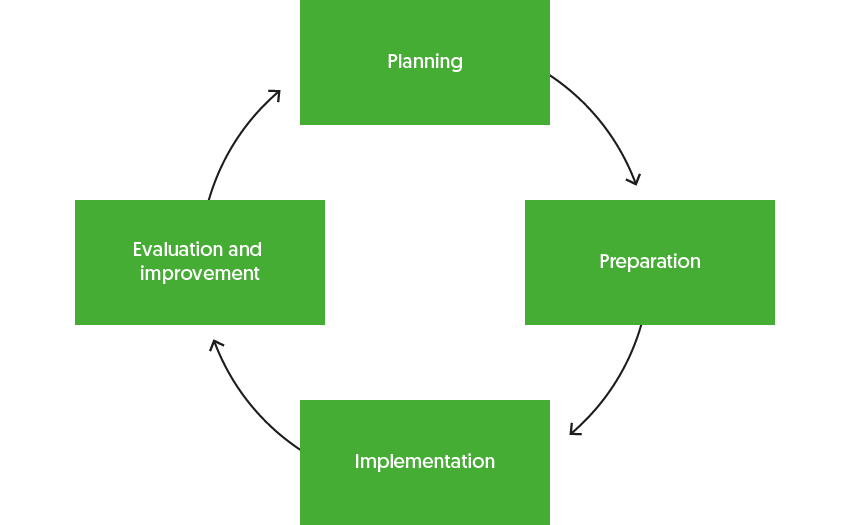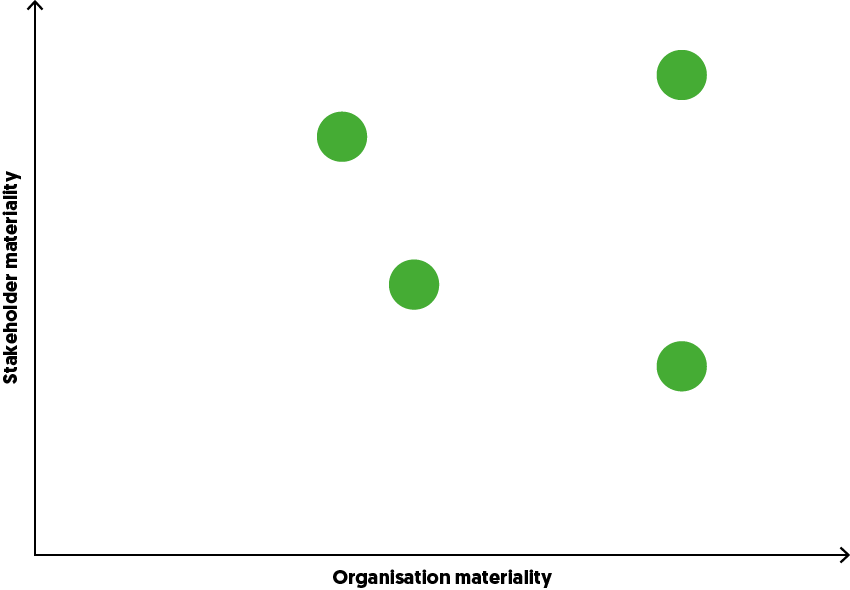AA1000SES principles in dialogue sessions
The AA1000SES (Stakeholder Engagement Standard) is an international standard developed to help organisations engage stakeholders effectively, responsibly and transparently. It was developed in response to the growing need to involve stakeholders in all relevant social, environmental or economic topics.
It can be used when organising and conducting dialogue sessions that enable direct interaction with key stakeholders, and in building long-term relationships.
To ensure the effectiveness of a dialogue session, the organisation should be properly prepared. This means involving top management, who are responsible for overseeing the process, and developing a communication plan with stakeholders. Key stakeholders should be identified, and their needs and expectations of working with the organisation defined. Before initiating a dialogue, it is worth setting objectives to be achieved and selecting appropriate methods for engaging stakeholders.
AA1000SES principles in dialogue sessions
The AA1000SES standard emphasises three core principles: inclusivity, materiality and responsiveness.
- Inclusivity – ensures that all relevant stakeholder groups have the opportunity to participate in the dialogue process and express their views in the context of sustainable development. It is important to include the broadest possible spectrum of stakeholders to ensure a variety of perspectives on social, environmental or economic issues.
- Materiality – identifying and involving stakeholders who have the greatest impact on the organisation’s objectives or activities. In relation to sustainability, it is crucial to focus on those groups whose opinions, expectations and needs are most important to the implementation of the organisation’s strategy.
- Responsiveness – an organisation’s ability to respond to stakeholder needs and expectations in an appropriate and timely manner. Organisation should not merely listen to stakeholders, but also proactively respond to their concerns and changing conditions (e.g. market) in order to build sustainable and positive relationships.
Defining the purpose and scope of dialogue sessions
A dialogue session should have a clearly defined purpose, driven by the needs of the organisation and the expectations of the stakeholders. This may include, for example:
- obtaining stakeholder views on sustainability policies;
- discussing decarbonisation measures;
- ensuring better communication.
The session should cover both operational aspects and long-term goals related to the organisation’s current and future strategy.
Stakeholder identification and mapping
In line with the principle of inclusivity, stakeholder mapping is a key step prior to conducting a dialogue session. Identifying all groups that have a significant impact on, or are affected by, the organisation supports the planning of appropriate actions. It is useful to distinguish between stakeholders with varying degrees of influence and involvement (e.g. employees, suppliers, local communities, NGOs, customers, or regulators).
Once a stakeholder map is created, different levels of engagement can be applied, appropriate to their role and impact.
- Low level of engagement – the organisation conducts limited, one-way communication by monitoring the situation or stakeholder response. Monitoring may include following the media, the internet or reports from other stakeholders. No action means that the organisation does not initiate contact with stakeholders and instead limits itself to passively receiving information.
- Medium level of engagement – the organisation engages in limited two-way communication in which it gathers stakeholder feedback and adjusts its actions based on their responses. The organisation may conduct consultations (e.g. surveys) or negotiate a specific issue, seeking agreement on specific areas. Contact is regular but does not involve full cooperation.
- High level of engagement – the organisation uses various communication methods to engage stakeholders. This involves a mutual exchange of information, where both parties jointly develop strategy and make decisions, allowing their expectations and ideas to be fully incorporated into the organisation’s operations. Communication is tailored to stakeholder groups, which supports long-term, effective relationships.

Dialogue session
A dialogue session can take different forms, but its most important feature should be adaptability. The method should align with the specifics of the stakeholder group, its level of involvement and the current topics to be discussed. It is also advisable to leave space for spontaneous exchanges of opinions which can yield unexpected but valuable information. This can take place through:
- workshops and group meetings which are the main vehicles for sharing experiences, discussing challenges and jointly finding solutions in key areas of cooperation;
- online platforms which are particularly useful for stakeholders in different locations or for large-scale activities, providing easy and convenient access to dialogue;
- surveys and opinion polls which play an initial or complementary role in the dialogue process, allowing a wide range of opinions to be gathered and preparing the ground for deeper discussions.
Once a dialogue session has taken place, a key step is to evaluate its effectiveness. Monitoring involves both tracking the progress of the dialogue arrangements, and analysing the results achieved and the effectiveness of the stakeholder engagement methods used. Such feedback is essential for identifying weaknesses in the dialogue process, and improving it in the future. The improvement cycle that can be applied in this context is based on four stages:
- planning – setting the objective and preparing the session;
- preparation – developing an engagement strategy;
- implementation – implementing sessions and activities;
- evaluation and improvement – analysing the results, identifying areas for improvement and adjusting actions for the future.

Based on the information gathered during the dialogue session and during follow-up activities (e.g. surveys), a materiality matrix can be created that helps to identify key areas and priorities for the organisation’s activities. Such a stakeholder engagement process enables a better understanding of stakeholders’ expectations and the impact of the organisation’s activities, which in turn supports more responsible strategic decision-making. A typical materiality matrix considers 2 main axes.
- Organisation materiality – determines how much impact an issue has on the organisation’s objectives, strategies and operations. This can include, but is not limited to, regulation, market, technological or financial changes.
- Stakeholder materiality – determines how important an issue is from a stakeholder’s perspective including their needs, expectations and potential consequences. These may include issues related to product quality, safety, remuneration or transparency.

Based on the materiality matrix, the organisation should identify which issues are critical to its strategy and long-term success. Topics in the top right corner of the matrix, where both impact on the organisation and relevance to stakeholders are high, should be prioritised and incorporated into the operational strategy.
January 30, 2025
Recent news
Kontrakt różnicowy i nowe możliwości dla przemysłu energochłonnego
W obliczu rosnących kosztów energii i presji konkurencyjnej, przemysł energochłonny w Polsce potrzebuje stabilnych i przewidywalnych warunków działania. Minister Rozwoju i Technologii Krzysztof Paszyk podczas konferencji 6 czerwca 2025 r. zapowiedział wprowadzenie nowego mechanizmu wsparcia – kontraktu różnicowego, który ma wejść w życie od 2026 roku.
Nowe perspektywy rozwoju dla hut dzięki Funduszowi Bezpieczeństwa i Obronności (FBiO)
W odpowiedzi na dynamicznie zmieniające się potrzeby w zakresie bezpieczeństwa narodowego i modernizacji infrastruktury strategicznej, polski rząd uruchamia Fundusz Bezpieczeństwa i Obronności (FBiO) – nowy mechanizm finansowania zasilany ze środków Krajowego Planu Odbudowy (KPO). Co istotne, wsparcie obejmuje również sektor hutniczy – zwłaszcza ten powiązany z produkcją komponentów dla przemysłu obronnego oraz infrastrukturę o podwójnym zastosowaniu (dual-use).
Webinar: Efektywność energetyczna jako fundament długoterminowych oszczędności
Już 30 lipca 2025 r. o godz. 11:00 zapraszamy na bezpłatny webinar organizowany przez Greeners, SSW oraz FRIZO. W trakcie spotkania online poruszymy najważniejsze tematy związane z aktualnie trwającym rokiem audytowym, nadchodzącymi zmianami w obowiązkach energetycznych przedsiębiorstw, możliwościami pozyskania dofinansowań oraz nowoczesnymi technologiami w chłodnictwie.
Energy transition of your company
We specialize in implementing sustainable development solutions that deliver tangible benefits to our clients.
